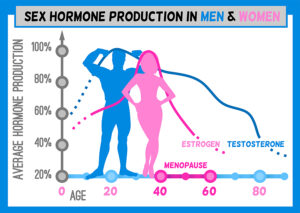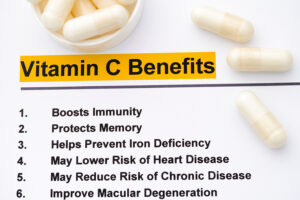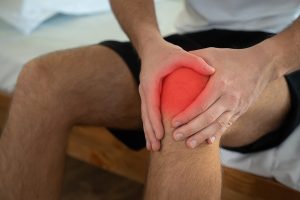A recent article by CNN describes what can happen to your body over months of isolation at home. The article is rather negative showing all the possible things that can go wrong. I have been isolated as well since March 2020. I handle the isolation differently than described in the article. I will comment to each point what can be done differently to avoid the complications mentioned.
Muscle loss
The CNN article makes the point that inactivity can make you lose muscle bulk within only one week. A lack of exercise weakens your muscle strength. And muscle strength has been associated with longevity.
My comment:
I do a brisk walk of 5 to 7 kilometers daily. This maintains my muscle bulk. But I have a treadmill in the basement and a couple of weights that I can use, if it rains outside.
There is a danger that heart and lungs get weaker
You need to raise your heart rate and you also need to perfuse your lungs through exercise. Many people do not like exercise. They sit in front of the TV for hours or they surf the net on the computer. Even just reading a book does not give you enough exercise to get your heart rate up and increase your lung perfusion.
My comment:
A brisk walk with proper distancing gives you fresh air, exercises your muscles, your heart and your lungs. It maintains your cardiovascular fitness.
Weight gain
Being home all the time allows you to look into the fridge more often and eat snacks that are processed. People tend to eat more often than 3 times a day. The end result is that you gain weight. In the beginning of the epidemic people stocked up on non-perishable foods. Often they contain more sugar and carbohydrates. Consuming these foods leads to weight gain. Wearing masks, frequent hand washing, isolation practices and change of normal routines makes people get stressed. Stress leads to overeating and weight gain.
My comment:
In the last 6 months that I did home isolation my body mass index (BMI) stayed in the 21.0 to 22.0 range. I ate three meals a day. I avoided processed foods as they are overloaded with sugar, salt and refined carbs. Once a month I do a 5-day fasting mimicking diet according to Dr. Longo. This ensures that my BMI stays within the range I indicated. Otherwise I eat a Mediterranean diet, which is anti-inflammatory.
Your posture could suffer
When you are seated in front of the computer or the TV you tend to engage in poor postures. This can lead to strains of your back, neck, shoulders and hips. Staring at the computer screen or the TV can also give you eye strain.
My comment:
The key is movement, such as getting up and walking around; doing other activities like lawn mowing, weed eating or doing dishes. This interrupts any longer stretch of bad posture.
Your sleep quality can suffer
The more exposure to sunlight during the day you get, the more vitamin D you produce in the skin. Some people lack the necessary enzymes in the skin to convert cholesterol into vitamin D. But exposure to sunlight also helps to reinforce your diurnal hormone rhythm. This is also called circadian rhythm. Avoid blue lights (TV, computer, iPhones etc.) in the evening before bedtime as this can interfere with a deep sleep later. Also go to bed early enough (between 10 and 11 PM) to allow your circadian rhythm to take over.
My comment:
Some people (above the age of 60) benefit from 3 mg of melatonin at bedtime. After the age of 60 people no longer produce enough melatonin in the pineal gland. If I wake up in the middle of the night, I take another 3 mg of melatonin prior to 3AM. Caution: after 3 AM melatonin can give you a bit of a hangover in the morning.
Your brain can slow down
The brain needs nutrition and exercise. Exercise can eliminate certain amino acid by-products that otherwise turn into neurotoxins. With exercise you even prevent neurotoxins to enter the brain.
My comment:
I find that I must at least do a brisk walk of 4 kilometers a day. It prevents back pain, helps me sleep better and keeps my mind clear. But as mentioned earlier I prefer doing a brisk walk for 5 to 7 kilometers a day. In the past (prior to March 2020 when the Covid-19 pandemic started) I went to the gym every day. When it finally reopened, they had one Covid-19 case at the gym. I decided that it is too dangerous to go back to the gym until a safe Covid-19 vaccine is available in the summer of 2021. I feel the same way about flying. It is not worth the risk. I can just stay local and do my own program. The pleasure of traveling can wait until the summer of next year.
Conclusion
A recent CNN article described the dangers of passively staying in home isolation. I felt that this article was on the negative side. I found that by including a regular brisk walking program into my daily lifestyle the day got more structured. I felt I had more energy and I had no aches or pains. If I spent too much time watching TV or spending in front of the computer, I developed back aches and felt sluggish. I incorporated a 5-day fasting mimicking diet according to Dr. Longo once per month into my regular Mediterranean diet. This allowed me to keep my body mass index in the 21.0- 22.0 range. Doing what I described above I could continue to hold my weight, have energy and stay pain free for many more months. But when the Covid-19 vaccine arrives in spring/summer of 2021 I hope that things will return to normal.















